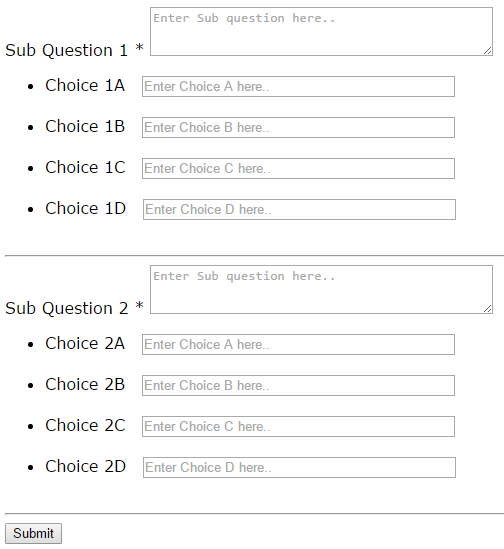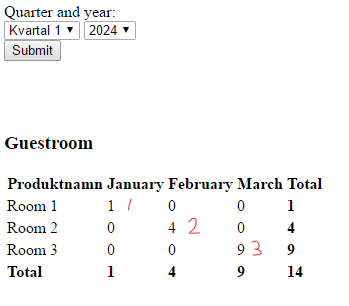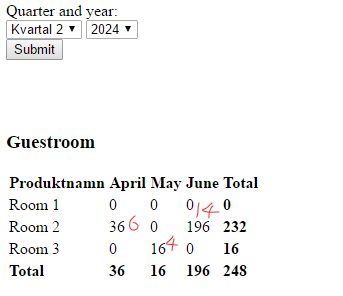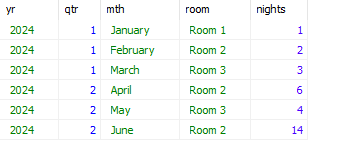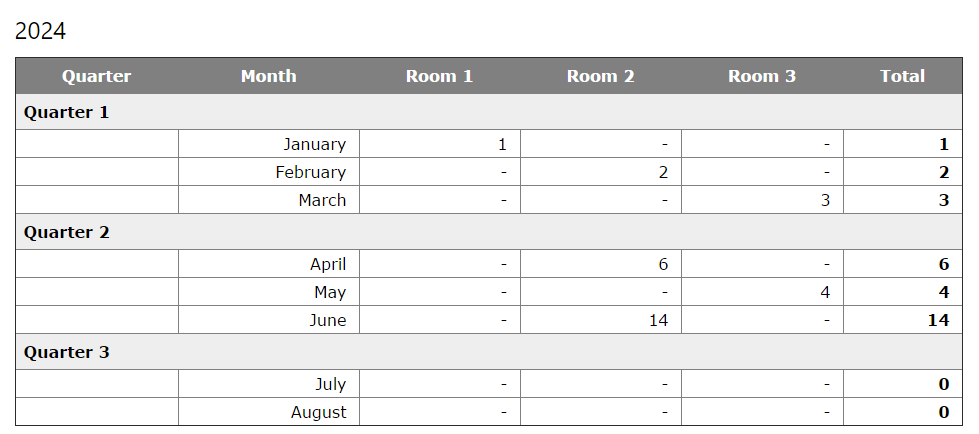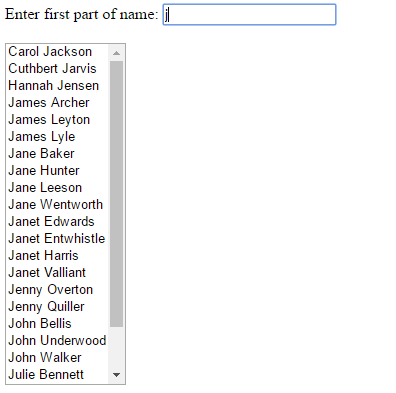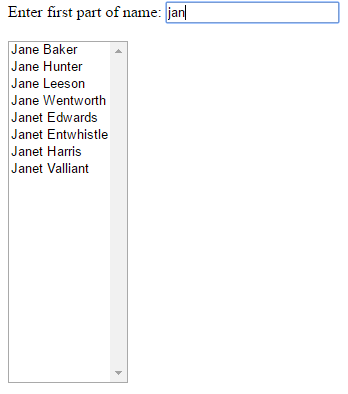Leaderboard
Popular Content
Showing content with the highest reputation since 06/20/2024 in Posts
-
Highly recommend switching to a library like PHPMailer or SwiftMailer - they're both easier to use and more reliable than php's native mail function.2 points
-
the most common reason for a password_hash()/password_verify() to fail is because the database column is not long enough to hold the hashed value. another common reason are programming mistakes in the form/form processing code and a lack of server-side validation that results in the hash value not actually being from the password that was submitted in the registration code, or the value being used in the login code not being what you think it is. your post method form processing code should always trim the input data, mainly so that you can detect if all white-space characters were entered, then validate all inputs before using them.2 points
-
the file system path/filename must be to where the file is located on the disk, either using a relative path (relative to the file with the include/require starting in it) or an absolute path. a leading / refers to the root of the current disk, which is doubtful where that file is located, and which will be producing a php error about a non-existent path/file. you must get php to help you by reporting and displaying all the errors it detects. you can temporarily set php's error_reporting/display_errors in your code (you will want to remove the settings when you are done learning, developing, and debugging). you can add the following immediately after the first opening <?php tag in the main file - ini_set('display_errors', '1'); error_reporting(-1);2 points
-
I'd do something like this... <?php $data = [ '46.105.73.18:27015' => [ 'gq_address' => '46.105.73.18', 'gq_dedicated' => '', 'gq_gametype' => '', 'gq_hostname' => '', 'gq_joinlink' => 'steam://connect/46.105.73.18:27015/' , 'gq_mapname' => '', 'gq_maxplayers' => '', 'gq_mod' => '', 'gq_name' => 'Counter-Strike: Source' , 'gq_numplayers' => '', 'gq_online' => '', 'gq_password' => '', 'gq_port_client' => 27015 , 'gq_port_query' => 27015 , 'gq_protocol' => 'source' , 'gq_transport' => 'udp' , 'gq_type' => 'css' , 'players' => Array (), 'teams' => Array () ] ] ; $tdata = ''; foreach ($data as $k => $v) { $v = array_filter($v); // get rid of blank values $tdata .= "<table border='1'> <tr><th>Array key</th><th>" . join('</th><th>', array_keys($v)) . "</th></tr>\n"; // output headings $tdata .= "<tr><th class='rowth'>$k</th><td>" . join('</td><td>', array_values($v)) . "</td></tr> // output values </table>\n"; } ?> <html lang='en'> <head> <meta 'charset'='utf-8'> <title>Example</title> <style type='text/css'> table { border-collapse: collapse; margin-bottom: 10px; } th { background-color: #444; color: white; padding: 8px; } .rowth { background-color: #888; } td { padding: 8px; text-align: center; } </style> </head> <body> <?= $tdata ?> </body> </html> Giving ...2 points
-
First step to manually parsing HTML is to stop manually parsing HTML. Use DOM instead.2 points
-
After about 3 hours of waiting I killed the process as the SQL server never showed a status other than "idle". I think it hit a problem and got itself into an infinite loop doing nothing. To give myself some data to work with, I managed to extact the table structure , the first 3,400 and the last 600 records from the sql file. I could have done all of them but it (thankfully) uses multiple row inserts (1700 at a time) and it takes an age scrolling through the text to find each block's start and end then select the block. There are about 200 such blocks and each takes about 2.5 seconds to load the data - so the whole load should have taken 8-9 minutes. Enough of the excuses. I finally came up with a solution using the post table. The first part (WITH ...) creates a temporary table called "plast" which contains a row for each threadID with the latest date of all the posts for the thread. The main part of the query (SELECT ...) matches the threadid/latest date with the post table to find the matching post and also joins to the thread table to pick uo thread info. Finally, I limit the output to just those dates in the last 7 days. (Apologies for screwing up the text encoding along the way - eg "Jürgen Peters". It's only test data.) WITH plast AS ( SELECT threadID , MAX(time) as latest FROM wbb1_1_post GROUP BY threadID ) SELECT t.threadID , t.topic , p.userID , p.username , p.postid , FROM_UNIXTIME(p.time) AS time , FROM_UNIXTIME(plast.latest) AS latest FROM wbb1_1_post p JOIN wbb1_1_thread t ON p.threadID = t.threadID JOIN plast ON plast.threadid = p.threadid AND plast.latest = p.time WHERE FROM_UNIXTIME(p.time) > CURDATE() - INTERVAL 7 DAY ; +----------+----------------------------------------------------------------+--------+------------------+--------+---------------------+---------------------+ | threadID | topic | userID | username | postid | time | latest | +----------+----------------------------------------------------------------+--------+------------------+--------+---------------------+---------------------+ | 131549 | welche Spinne? --> eventuell Lepthyphantes sp. | 5455 | Manfred Zapf | 507256 | 2025-01-26 10:08:19 | 2025-01-26 10:08:19 | | 131698 | Baumwanze | 1397 | zobel | 507259 | 2025-01-26 12:48:43 | 2025-01-26 12:48:43 | | 56659 | Grüne Futterwanze? | 15196 | Christine | 507261 | 2025-01-26 14:57:09 | 2025-01-26 14:57:09 | | 131576 | Kleine schwarze Spinne --> Enoplognatha cf. thoracica | 15395 | Bernd 07 | 507263 | 2025-01-26 16:01:45 | 2025-01-26 16:01:45 | | 131307 | Amaurobius fenestralis? --> bestätigt | 15395 | Bernd 07 | 507264 | 2025-01-26 16:08:09 | 2025-01-26 16:08:09 | | 131701 | Unbekannte Schneckenart | 15395 | Bernd 07 | 507267 | 2025-01-26 16:43:50 | 2025-01-26 16:43:50 | | 131702 | Encyrtidae? | 11406 | JohnEs81 | 507268 | 2025-01-26 17:00:37 | 2025-01-26 17:00:37 | | 131700 | Welche Wanze ist das? --> Arocatus longiceps | 15395 | Bernd 07 | 507272 | 2025-01-26 17:36:02 | 2025-01-26 17:36:02 | | 131699 | Tegenaria --> nein sondern Amaurobius similis/fenestralis | 1999 | Klaus Fritz | 507274 | 2025-01-26 17:48:07 | 2025-01-26 17:48:07 | | 131683 | Grüne Larve -> Geometridae Art | 11406 | JohnEs81 | 507280 | 2025-01-26 20:41:49 | 2025-01-26 20:41:49 | | 131703 | eine Acericerus heydenii? | 1 | Jürgen Peters | 507282 | 2025-01-26 20:45:32 | 2025-01-26 20:45:32 | | 131687 | Zygina nivea? | 15392 | Sascha_N | 507286 | 2025-01-26 21:15:21 | 2025-01-26 21:15:21 | | 131686 | Welcher Schnellkäfer? --> Melanotus sp. | 15395 | Bernd 07 | 507287 | 2025-01-26 21:29:11 | 2025-01-26 21:29:11 | | 131693 | Lispocephala brachialis --> bestätigt | 15800 | Bernd Cogel | 507293 | 2025-01-26 22:06:16 | 2025-01-26 22:06:16 | | 131704 | Cantharis paradoxa? --> Cantharis sp., ein schwarzer, immerhin | 15335 | Simeon Indzhov | 507295 | 2025-01-26 22:29:15 | 2025-01-26 22:29:15 | | 131695 | Peyerimhoffina gracilis? | 15335 | Simeon Indzhov | 507296 | 2025-01-26 22:36:08 | 2025-01-26 22:36:08 | | 131705 | Phytoecia coerulescens? | 1 | Jürgen Peters | 507297 | 2025-01-26 22:52:48 | 2025-01-26 22:52:48 | +----------+----------------------------------------------------------------+--------+------------------+--------+---------------------+---------------------+ Are you planning on rebuilding the database?2 points
-
you are doing 'date-ination'. it's like pagination, but using dates. you should be using a get request to determine what will be displayed on the page. this is so that if someone finds a result they would like to return to or share, they can bookmark or share the URL and can return to the same result. the dates you pass in the URL should be a standard YYYY-MM-DD format. format the dates as 'l j M' only when you display them. you would default to the current monday if there is no get input. you would produce the previous/next links with the previous/next monday's date and include any existing get parameters so that if you add other search/filters, they will automatically get propagated in the URL between pages. example code - <?php date_default_timezone_set('America/Denver'); // default to the current monday if there is no get input if(!isset($_GET['fdw'])) { $dw = new DateTime('monday this week'); $fdw = $dw->format('Y-m-d'); } else { // you should validate that the get input is a properly formatted date - code left up to you $fdw = $_GET['fdw']; } // use $fdw in your code to produce the output $dw = new DateTime($fdw); echo $dw->format('l j M') . '<br>'; // get a copy of any existing get parameters $get = $_GET; // produce the previous link // calculate previous date $dw = new DateTime($fdw); $pw = $dw->modify('-1 week'); $pfdw = $pw->format('Y-m-d'); // set the fdw element $get['fdw'] = $pfdw; // build the query string part of the url $qs = http_build_query($get,'','&'); echo "<a href='?$qs'><button>< Previous Week</button></a>"; // produce the next link // calculate next date $dw = new DateTime($fdw); $nw = $dw->modify('+1 week'); $nfdw = $nw->format('Y-m-d'); // set the fdw element $get['fdw'] = $nfdw; // build the query string part of the url $qs = http_build_query($get,'','&'); echo "<a href='?$qs'><button>Next Week ></button></a>";2 points
-
It might work a little more cleanly in PHPStorm, but when I tried it in VS Code, I found it much more complicated to try to select text or read through code when the editor was injecting those things into the view. Maybe if they weren't inline, though I can't imagine how not, they might be nicer for me... But I'm also a proponent of the idea that you should be able to tell what the parameter is, be that through a variable name or an obvious literal value (or a constant...), and if you can't tell then you should do something about that. // this is obvious on what the parameters are password_verify($password, $hashedPassword) // this is not password_verify($value, $row[1])2 points
-
Judicious application of array key names can greatly increase the efficiency and simplicity of your code. Consider this simplified version of the questions/options form code <form method='post' > <?php for ($qno=1; $qno<=2; $qno++) { echo <<<HTML <label> Sub Question $qno <span class="req">*</span> <textarea cols="46" rows="3" name="Q[$qno][question]" placeholder="Enter Sub question here.."></textarea> </label> <ul> HTML; for ($opt='A'; $opt<='D'; $opt++) { echo <<<HTML <li>Choice $qno$opt (text) <input type='text' name="Q[$qno][opts][$opt]" placeholder="Enter Choice A here.." size='40'> </li><br><br>\n HTML; } echo "</ul><hr>\n"; } ?> <input type='submit'> </form> producing... When the form is submitted, the POST array is like this... Array ( [Q] => Array ( [1] => Array ( [question] => aaaaaaaaaaaaaaaaaaaaaaaaaaa [opts] => Array ( [A] => aa [B] => bb [C] => cc [D] => dd ) ) [2] => Array ( [question] => bbbbbbbbbbbbbbbbbbbbbbbbb [opts] => Array ( [A] => ww [B] => xx [C] => yy [D] => zz ) ) ) ) Now you can easily iterate through the array to write the questions/options to you database foreach ( $_POST['Q'] as $qno => $qdata ) { write $qno and $qdata['question'] to question table save last insert id as $qid foreach ( $qdata['opts'] as $ono => $choice ) { write $qid, $ono, $choice to choice table } } Job Done.2 points
-
Unchecked checkboxes are not posted. I prefer to use a the null coalescing operator (??) when handling checkboxes EG $Bold = $_POST['Bold'] ?? 0; //if not set, default to '0'2 points
-
I had to create my own test data (thanks for that) but naturally I don't know how it conforms with yours. TABLE: product TABLE: bookingItem +----+-------------+-----------+--------+ +----+-----------+---------------------+---------------------+----------+ | id | productName | category | status | | id | productid | startTime | endTime | quantity | +----+-------------+-----------+--------+ +----+-----------+---------------------+---------------------+----------+ | 1 | Room 1 | Guestroom | Active | | 1 | 1 | 2024-01-01 11:32:01 | 2024-01-02 11:32:59 | 1 | | 2 | Room 2 | Guestroom | Active | | 2 | 2 | 2024-02-01 11:34:08 | 2024-02-03 11:34:24 | 2 | | 3 | Room 3 | Guestroom | Active | | 3 | 3 | 2024-03-01 11:34:56 | 2024-03-04 11:35:08 | 3 | | 4 | Room 4 | Guestroom | NULL | | 4 | 2 | 2024-04-01 12:20:20 | 2024-04-07 12:20:41 | 6 | | 5 | Room 5 | Guestroom | NULL | | 5 | 3 | 2024-05-01 01:21:49 | 2024-05-05 12:21:58 | 4 | +----+-------------+-----------+--------+ | 6 | 5 | 2024-06-19 12:23:03 | 2024-06-29 12:23:28 | 10 | | 7 | 2 | 2024-06-01 13:02:51 | 2024-06-15 13:03:16 | 14 | +----+-----------+---------------------+---------------------+----------+ On running your code with my data I get these results for Q1 and Q2. I have written the correct totals in red. As you can see there is a distinct pattern - your totals are the correct totals squared. However, I could not spot any multiplication in the code (I ran as separate query to confirm the correct totals) I have to say, in your code you really make a meal of those dates in the years and quarters considering that SQL can handle it easily. Here's my version... <?php ############################################### # CREATE YOUR OWN PDO DATABASE CONNECTION # # # require 'db_inc.php'; $pdo = mdbConnect('db1'); # # # # ############################################### $range = [ '2020-01-01', '2024-07-31' ]; $selectedYear = $_GET['year'] ?? 0; $whereYear = ''; if ($selectedYear) { $whereYear = 'AND YEAR(d.dt) = ?'; $range[] = $selectedYear; } $res = $pdo->prepare("WITH RECURSIVE dates(dt) AS ( SELECT ? UNION ALL SELECT dt + INTERVAL 1 MONTH FROM dates WHERE dt < ? ) SELECT YEAR(d.dt) AS yr , QUARTER(d.dt) as qtr , MONTHNAME(dt) AS mth , productName AS room , COALESCE(SUM(DATEDIFF(endTime, startTime)), '-') AS nights FROM product p CROSS JOIN dates d LEFT JOIN bookingitem b ON b.productid = p.id AND YEAR(d.dt) = YEAR(b.startTime) AND MONTH(d.dt) = MONTH(b.startTime) WHERE p.`status` = 'Active' $whereYear GROUP BY yr, qtr, MONTH(d.dt), p.id "); $res->execute($range); $results = $res->fetchAll(); $rooms = array_unique(array_column($results, 'room')); $theads = "<tr><th>Quarter</th><th>Month</th><th>" . join('</th><th>', $rooms) . "</th><th>Total</th></tr>\n"; ### RESTRUCTURE THE RESULTS ARRAY foreach ($results as $r) { $data[$r['yr']][$r['qtr']][$r['mth']][$r['room']] = $r['nights']; } ?> <!DOCTYPE html> <html lang='en'> <head> <meta charset="utf-8"> <title>Example</title> <link rel="stylesheet" href="https://www.w3schools.com/w3css/4/w3.css"> <style type='text/css'> table { width: 100%; border-collapse: collapse; } th { background-color: #808080; color: white; padding: 8px; } td { padding: 4px 12px; text-align: right; } .ca { text-align: center; background-color: #EEE; } .la { text-align: left; background-color: #EEE; color: black; } </style> </head> <body> <header class='w3-indigo w3-padding w3-margin-bottom'> <h1>Guestroom Occupancy</h1> </header> <div class='w3-content w3-padding'> <?php ## OUTPUTFROM RESTRUCTURED ARRAY foreach ($data as $yr => $ydata) { echo "<h3>$yr</h3>\n <table border='1'> $theads "; foreach ($ydata as $qtr => $qdata) { $span = 3 + count($rooms); echo "<tr><th class='la' colspan='$span'>Quarter {$qtr}</th></tr>\n"; foreach ($qdata as $mth => $mdata) { echo "<tr><td> </td><td>$mth</td><td>" . join('</td><td>', $mdata) . "</td><td><b>" . array_sum($mdata) . "</b></td></tr>\n"; } } echo "</table>\n"; } ?> </div> </body> </html> Output2 points
-
1 point
-
Correct. That is an invalid mysql date. You can set a mode of mysql to accept that value, but that is not the way to handle this problem. Instead, make sure that the OTP expiry allows NULL. Then set the value to NULL. Personally, I would not design a system like this. Instead I would have a related table that only holds "events". I will usually have an user_event_type table that has different allowable authentication events. For example: user event type id | Description 1. Registration 2. Password Reset 3. One time Password 4. Login 5. Close account 6. Failed Login 7. Account locked etc. I don't know what your user table looks like but hopefully it has an ID other than "email". I'll assume you do. So you then have a user_event table with a structure like this: id | user_id | user_event_type_id | event_value | status | expire_date_time | created_at 100| 245 | 3 | xyzabc... | 0 | ..... | current_date There are a few reasons to do this. They include: - you have an audit trail of events - MySQL with InnoDB is optimized for insert queries, and they don't reduce concurrency unlike update queries. Instead of trying to overwrite the OTP, you can simply set the status from 0 to 1 (or whatever value you want). You could have several status values if you want fine grain control over the changes in status. Just to keep it simple, if the person logs in with the OTP, then it's used, so you set the status to 0. A subsequent query of "SELECT * FROM user_event WHERE user_id = 245 and user_event_type = 3 AND status = 0 ORDER BY created_at DESC LIMIT 1" will always find the most recent OTP request. You can then compare that with the OTP value. Making event_value a varchar of a specific length is no cost if the field is unused, as varchars will use the bytes required. So if you want to use event_value for additional data, you can do that, but if it's something simple like "login" event, you don't need to use it. Personally I would also have a client_ip field in a table like this, where I use a varbinary field to store the IP. This works for both IPv4 and IPv6 addresses, but there are some tricks to doing that, and it is not specifically related to your question. I mention it just to be complete.1 point
-
The first thing I notice is that you have 2 session_start commands. I'm not sure that is the problem but remove the one in header.php.1 point
-
so, i found the problem, with the help of php's error reporting, though the problem is in javascript. you are echoing blocks of static html/javescript using php's heredoc syntax. when I made the test page i used, the javascript was simply in-line. you are using template literals with embedded expressions in the javascript, e.g. ${some_var}. however, in php's heredoc syntax, this is the syntax for a php variable. so, php is putting the last value for any of its variables with the some_var name into the echoed javascript. how i found this is that the embedded expressions in the openUpdateTotalsPopup() javascrpt, for ${width}, ... produced undefined php variable errors. the simplest fix would be to use php's nowdoc syntax. the correct solution would be to NOT echo blocks of static html/javascript, which I see i wrote about in one of your previous threads.1 point
-
your dynamic addRow javascript only adds a row to the current html table, but the form processing code assumes that all the array form fields have the same number of elements. since your example, using name-number elements, provides no context upon which to help you, you need to decide if you should change the form to dynamically add a row to every html table at the same time or if your form processing code should handle the data from each html table separately, possibly even storing related data in separate database tables. if you care to provide some real world context to this data, we would be better able to help.1 point
-
your written statement is ambiguous. please post some examples showing what result you want for different input combinations. specifically, what is the 'successful' case, which can then be complemented to produce the error case? what do you want when $p is not Yes? is that an error or does it mean that you don't care about the other three values?1 point
-
mac_gyver is 100% correct with those suggestions. I will add that using '?' placeholders can get confusing if you've got several to many variables in your query - in this case i recommend named placeholders. So, to update mac_gyver's perfectly good code as an example, $sql = "Select * FROM weekends WHERE Weekend_Number = :weekendNumber AND Men_Women = :menWomen"; $stmt = $pdo->prepare($sql); $stmt->execute([ 'weekendNumber' => $_SESSION['Weekend_Number'], 'menWomen' => $_SESSION['Men_Women'] ]); Note that another benefit of using PDO over mysqli is that you don't have to bind the parameters separately. It's been a while since I used mysqli, but i think i remember having to bind the result values as well? If I'm remembering correctly, this is another thing you don't have to do with PDO.1 point
-
you should use var_dump() on the values for debugging, since it indicates the length of the value. unfortunately, you didn't show us what you saw when you echoed the variables and if you made a change to the sql query statement and it didn't work, showing us what you changed would help someone solve the problem. converting a query that has variables being put directly into it into a prepared query is straight forward - remove, and keep for later, any php variables that are inside the sql query statement. note: any wild-card characters in a LIKE comparison are supplied as part of the data value not as part of the sql query statement. remove any quotes or {} that were around the php variable and any concatenation dots/extra quotes that were used to get the php variable into the sql query statement. put a simple ? prepared query place-holder into the sql query statement for each value. call the PDO prepare() method for the sql query statement. this returns a PDOStatement object. call the PDOStatement execute([...]) method with an array of the variables you removed in step #1. for a query that returns a result set, fetch the data from the query. see the PDOStatement fetch() method when fetching a single row of data. the PDOStatement fetchAll() method when fetching all the rows of data at once. and occasionally the PDOStatement fetchColum() method when fetching a single column from a single row of data. forget about any num rows function/method/property. just fetch then test if/how many rows of data there are. for a query that doesn't return a result set, you can use the PDO lastInsertId() method and the PDOStatement rowCount() method to get the last insert id and the number of affected rows. for the query in this thread, this would look like - // i recommend that you build the sql query statement in a php variable. this makes debugging easier since you can echo the sql $sql = "Select * FROM weekends WHERE Weekend_Number = ? AND Men_Women = ?"; $stmt = $pdo->prepare($sql); $stmt->execute([ $_SESSION['Weekend_Number'], $_SESSION['Men_Women'] ]); // if this query can match a set of data $result = $stmt->fetchAll(); // if this query can match at most one row of data $result = $stmt->fetch(); typical PDO connection code - $DB_HOST = ''; // database host name or ip address $DB_USER = ''; // database username $DB_PASS = ''; // database password $DB_NAME = ''; // database name $DB_ENCODING = 'utf8mb4'; // db character encoding. set to match your database table's character set. note: utf8 is an alias of utf8mb3/utf8mb4 $options = [PDO::ATTR_ERRMODE => PDO::ERRMODE_EXCEPTION, // set the error mode to exceptions - this is the default setting now in php8+ PDO::ATTR_EMULATE_PREPARES => false, // run real prepared queries PDO::ATTR_DEFAULT_FETCH_MODE => PDO::FETCH_ASSOC // set default fetch mode to assoc ]; $pdo = new pdo("mysql:host=$DB_HOST;dbname=$DB_NAME;charset=$DB_ENCODING",$DB_USER,$DB_PASS,$options);1 point
-
You don't need the braces so long as there are only single statements to be executed but only if they are in the same <?php .. ?> block of code. EG this works... <?php if (date('d')==24) echo 'today'; else echo 'Not today'; ?>1 point
-
/homepages/29/d1007800584/htdocs is your site root - this is set by your host at the server level. If site-header.php and tester-include.php are both in the /page/ directory, the include from tester-include.php should be simply `require_once('./site-header.php');` If that still doesn't work, try `require_once(dirname(__FILE__).'/site-header.php');` (if site-header.php is in a sub-directory called /root/, add that into the require). As an aside, your host should be on php 8.1 at the least - 7.4 reached end of life in November 2022. You may want to ask them why they haven't upgraded yet. If they can't give you a decent answer, there are plenty of low-cost modern hosts around - ask here. Someone can point you in the right direction.1 point
-
this doesn't exist at the point when the ajax request is made, because they are two different http(s) requests. that's because ALL the code in index.php has already been executed during the initial http(s) request for index.php, by the time the ajax request occurs. for the initial case when the session variable doesn't exist, after you output the javascript code, the php code needs to exit/die without doing anything else (it currently runs to completion.) the ajax request needs to be to index.php, instead of screenDetect.php. the code will then set the session variable and it will be available when the rest of the code in index.php runs.1 point
-
i recommend giving the fields a class name. you can then eliminate the array and just use getElementsByClassName to get a collection of the elements to loop over. see if this gets you closer to what you want - <html> <head> </head> <body> <script> function hasNumericValue() { const matches = document.getElementsByClassName("numeric"); for (let i = 0; i < matches.length; i++) { alert(Number.parseInt(matches[i].value)); } } </script> <form name="tester" method="post" action="" onsubmit="return hasNumericValue();" > <input name="it_c" type="text" class='numeric' value=""> <br> <input name="it_h" type="text" class='numeric' value=""> <br> <input name="ot_c" type="text" class='numeric' value=""> <br> <input name="ot_h" type="text" class='numeric' value=""> <br> <input type="submit" value="submit"> </form> </body> </html> you can then test if each value is or is not a number.1 point
-
Yes this is common practice. When you first introduce a table you can alias it. You are then free to alias all the columns which can be quite a time saver when you have joined tables together, using "alias.column_name" as Barand did. You can do this explicitly using the 'AS' keyword but you can also omit the 'AS'. It's up to you, but I typically will abbreviate the name in some way, as do most experienced developers, such that your alias is at most a few letters. You should also notice, that he used an alias for the computed columns. Column names can also be aliased, and it's also a common practice. FROM_UNIXTIME(t.time) AS time So in this case you have an example of both alias options being used: thread table was aliased to t Used the t alias to specify the time thread.time field being passed to the FROM_UNIXTIME() SQL function the result of the function being aliased to the name 'time' in the final result set Also time was used in the order by. MySQL allows you to do this (use an aliased column name in an ORDER BY) although not all RDBMS do.1 point
-
From what I have been given, I came up with this ... SELECT b.boardID , b.title , t.threadID , t.topic , t.userID , t.username , FROM_UNIXTIME(t.time) AS time , FROM_UNIXTIME(t.lastPostTime) AS lastPostTime FROM wbb1_1_board b JOIN wbb1_1_thread t USING (boardid) JOIN wbb1_1_board_last_post l USING (boardid, threadid) ORDER BY boardID, threadid, time; Hovever, it seems to me that there should be a "post" table containing the post details, including the time_posted. Then you could just extract the posts containing the latest timestamp for each thread.1 point
-
Contact your hosting provider for assistance. In the meantime, you will need to upload your PHP file change by some other means, such as by using SFTP.1 point
-
Earlier in this thread you said that this ... +----+-----------+-----------+ | id | slug | tag_check | +----+-----------+-----------+ | 1 | hugh-jass | 1 | | 2 | hugh-jass | 2 | +----+-----------+-----------+ ... was acceptable. Your "solution" would not permit this. Secondly, you are using a "dependent subquery" which means for every record inserted you must query all the existing lookig for a duplicate. This can be extremely slow and should be avoided when writing queries. Changing your unique key to ... UNIQUE INDEX `unq_name` (`name`) USING BTREE, ... and using this query would have same result ... INSERT IGNORE into wp_terms (name,slug) SELECT concat(nameFirst,' ',nameLast) , lower(concat(nameFirst,'-',nameLast)) FROM a_players ;1 point
-
You can add a usort function, which sorts the $files1 array based on the modification time of each file. Something like this: usort($files1, function($a, $b) { return filemtime($b) - filemtime($a); }); I would also recommend using htmlspecialchars for added security. Hope this helps.1 point
-
Can you put your code in a code block in the future? Reading/looking at double spaced code without proper indentation or color syntax highlighting wastes everyone's time and effort and greatly decreases the final results. Notice @Moorcam helpful reply to you where he put an offending line into a proper block where the issue is easy to identify.1 point
-
CodeIgniter 4 is leaps and bounds better than 3 - it was re-written from scratch to make use of modern development patterns. That being said, as gizmola mentioned it was still pretty bare-bones last time I used it, whereas Laravel is fully featured. Some may say too fully featured, but it's optimized very well and has a large and active ecosystem. For instance, if you don't want to pay for Pusher they just released Reverb, which is a Laravel-specific websocket package that isn't the easiest thing to set up, but once you do it's quite good. It has a robust queue system that allows the developer to do a lot of work asynchronously right out of the box. The learning curve is steep, but most frameworks have that problem. Just know going in that there is a lot of magic to Laravel, so making sure you're comfortable reading source code is important (although the docs are better than most, IMO). I've not used Symfony specifically but - again as gizmola says - Laravel is built heavily on Symfony components. Best bet is to try building something smallish in all three and see which sings to you. Personally, even recognizing that Laravel has plenty of warts I prefer to work in it (though that may be Stockholm Syndrome as I've been working with it almost exclusively for about 6 years now).1 point
-
Here's an example. As you enter more letters of the name it narrows down the resulting list. (first and last names are searched) <?php # # HANDLE AJAX REQUESTS # if (isset($_GET['ajax'])) { if ($_GET['ajax'] == 'names') { $res = $pdo->prepare("SELECT id , concat(fname, ' ', lname) as name FROM person WHERE fname LIKE ? OR lname LIKE ? ORDER BY fname, lname "); $res->execute([ $_GET['search'], $_GET['search'] ]); $results = $res->fetchAll(); exit(json_encode($results)); } } ?> <!DOCTYPE html> <html lang="en"> <head> <title>Example</title> <meta charset="utf-8"> <script src="https://code.jquery.com/jquery-3.6.4.min.js"></script> <style type='text/css'> </style> <script type='text/javascript'> $(function() { $("#search").on("input",function() { let srch = $(this).val() + "%" $.get( "", {"ajax":"names", "search":srch}, function(resp) { $("#person").html("") $.each(resp, function(k,v) { let opt = $("<option>", {"value":v.id, "text":v.name}); $("#person").append(opt); }) }, "JSON" ) }) }) </script> </head> <body> <form> Enter first part of name: <input type='text' id='search' > <br><br> <select name='person_id' id='person' size='20'> <!-- names returned from search go here --> </select> </form>1 point
-
you would use a typeahead/autocomplete/autosuggest input field, using ajax to get a list of matching people, that the user can then click on one to select it.1 point
-
So you want something like this: foreach ($tokenArr as $val) { //... current code // bottom of foreach loop if ($errMess !== '') { break; } }1 point
-
You only need one query. For example TABLE : product +----+-------------+--------------+--------+ | id | productName | category | status | +----+-------------+--------------+--------+ | 1 | Room 1 | Guestroom | Active | | 2 | Room 2 | Guestroom | Active | | 3 | Room 3 | Guestroom | Active | | 4 | Room 4 | Guestroom | Active | | 5 | Function 1 | Functionroom | NULL | +----+-------------+--------------+--------+ code $sql = "SELECT SUM(status='Pending')as pending , SUM(status='Active') as active FROM product"; $result = mysqli_query($con, $sql); $row = mysqli_fetch_assoc($result); echo "Pending : <input type=\"button\" class=\"button\" value=\"{$row['pending']}\"> Active : <input type=\"button\" class=\"button\" value=\"{$row['active']}\"> "; output1 point
-
You need to give is some information as to what the actual issue is. Otherwise nobody can or will help you. Another good tip is to encase your code into the <> tag so it shows like this: <?php // database.php require_once __DIR__ . '/config.php'; // Ensure this path correctly points to config.php /** * Establish a new database connection. * * @return mysqli The MySQLi database connection object. * @throws Exception if the connection fails. */ function db_connect() { // Use MySQLi to connect to the database $connection = new mysqli(DB_HOST, DB_USER, DB_PASSWORD, DB_NAME); // Check if the connection was successful if ($connection->connect_error) { error_log("Database connection failed: " . $connection->connect_error); die("Database connection failed. Please check the error log for details."); } // Set the character set to UTF-8 for proper handling of characters if (!$connection->set_charset("utf8mb4")) { error_log("Error setting character set utf8mb4: " . $connection->error); } return $connection; } /** * Close an existing database connection. * * @param mysqli|null $connection The connection object to close. * @return void */ function db_disconnect($connection) { if ($connection instanceof mysqli) { $connection->close(); } } // Establish a connection and store it in the variable $db for use later $db = db_connect(); // You can now use $db for your database queries It makes it easier to read. Also, no need for this: if ($connection instanceof mysqli) { $connection->close(); } PHP automatically closes connections. Okay, your turn1 point
-
When storing dates in database always use yyyy-mm-dd format, and store in a DATE type column (or date time type if you need the time too. See https://forums.phpfreaks.com/topic/325220-date-help/?do=findComment&comment=16388851 point
-
Outside the webroot - whether that's called www/ or http/. The whole point is that you don't want the casual browser to be able to access the files directly, only php can access them. So from within the webroot you'll use something along the lines of include_once('../includes/myPhpFile.php'); The contents of myPhpFile are now accessible from the calling script.1 point
-
I'm not well versed in using cURL, but based on what you provided previously your call to the URL you are using is returning the response: 301 error "Permanently Moved" But, you expect to be getting the JSON encoded output for the $allowed_domains array you are creating. I would assume you have tested the url in a browser and verified you are seeing the JSON content? If not, start there. If the content is correct when access via a browser then my best guess is that the web server maybe has some logic to detect programmatic access to pages and is blocking it. I'm pretty sure I've seen something like that before. But your issue has noting to do with the error you first reported. You need to figure out why your cURL request is not retrieving the JSON content you think it should be returning. Although, this is a good opportunity to add additional error handling to your code to cover a scenario where the cURL request doesn't fail, but does not return contents you expect.1 point
-
the curl code is making a http(s) request to the URL, just like a browser would. because it is to a .php page, the php code is being executed on the target server and what you get back is whatever that page outputs. you do not get the raw php code. because you are trying to transfer data, i recommend that you use JSON and use echo json_encode($domains_content); in the domains.php code, then after you successfully receive that JSON string from the curl call, you can use json_decode() on it to get the array of data.1 point
-
Misunderstood. Frameworks are a bunch of code that other people wrote to do stuff. Using them saves you the time of having to write your own bunch of code to do stuff. They do so much stuff that the intention is you take what they provide as a foundation and then add what you want. There's also libraries, which are a bunch of code that other people wrote to do stuff that saves you the time of having to write your own code to do stuff, but they're much smaller in scope than frameworks. They're basically about solving small individual problems, so using libraries means you don't have to solve those same problems yourself and you can focus on more important issues. There is overlap between frameworks and libraries. The distinction is in how they get used: are you taking a bunch of stuff and adding more, or are you using stuff to create other separate stuff? VS Code and Dreamweaver (if anyone still uses that) are "integrated development environments", but everybody just calls them IDEs. IDEs are glorified text editors, in that they let you type stuff into a text file just like any simple text editor does, but IDEs also have tons of features dedicated to dealing with code and so are much nicer to use than text editors. Like they can be aware of language syntax nuances and tell you when you wrote something wrong, while text editors might be able to do a little bit of that but would care more about checking your spelling. I don't like "template" as a metaphor. A template is about taking something and supplying a few bits here and there and you're done. You go to some blog creator website (coughwordpress) and they'll give you a template for a site: you set a name, colors, images, whatever, but all you're doing is customizing the same basic thing that everybody else is using. This forum is basically a template because we installed Invision Power Board and customized it a bunch. A framework is about you having a starting point for actually building something - not just customizing. You write code to do things, you implement features, you make decisions about how things work, and so on. Making a complicated website involves many different things, and frameworks have a lot of that designed for you so you don't have to make it all yourself. Where are you seeing "controls"? That typically means things like text boxes and buttons and links, like right now I'm typing into a "textarea" control that has a bunch of formatting button controls at the top and a "submit" button control below it. But people don't normally use the word "control" much these days. I think maybe you shouldn't worry much about what a control is. It's such a generic term that it doesn't really say much. "Text box" and "button" and "link" are specific types of controls, and talking about those is much easier (but also kinda off-topic from what we're talking about now).1 point
-
... or ... $res = $pdo->query("SELECT Lvl , Sub FROM shadd_1 ORDER BY Lvl DESC, Sub "); $results = $res->fetchAll(PDO::FETCH_GROUP | PDO::FETCH_COLUMN); foreach ($results as $lvl => $arr) { echo "$lvl <UL>"; foreach ($arr as $sub) { echo "<li>$sub</li>"; } echo "</ul>"; } FYI - the $results array (slightly simpler than the $data array in above post) looks like this.. Array ( [ULE] => Array ( [0] => BASIC lug [1] => BASIC lug ) [ACE] => Array ( [0] => ger ) )1 point
-
@Psycho the PDO result/statement object is traversable whether you use query() or execute(). The mysqli result object is traversable (when the result of a query) but the statement object as a result of execute() is not (as well as having a different set of methods to process). This adds to my theory that mysqli result class and statement class were developed by two teams who never spoke to one another. EG $res = $pdo->query("SELECT name FROM reindeer"); foreach ($res as $r) { echo $r['name'] . "<br>"; } results... Comet Cupid Dasher Vixen Prancer Dancer Donner Blitzen1 point
-
PHP runs on the server. - Javascript runs on the client. On completion of the PHP it sends the page to the client where the javascript runs. At the time you "echo $array;" the js variable "i" does not yet exist. (Error thrown if turn on error reporting) By the time the javascript runs "$array" no longer exists.1 point
-
if data is static and you are positive that this is the code that you wish to implement, then your logic needs to change from less than two to a more precise identifier. A switch will work better for you and allow you to adjust the code if you add more items to the array (which should not contain curly braces, rather square brackets). <?php $data=["egg","york","pork"]; $total = count($data); for ($i = 0; $i < $total; $i++) { switch ($i) { case 0: echo '<p>SECTION A<br>'; break; case 2: echo '</p>SECTION B<br>'; break; } echo $data[$i] . '<br>'; } $data2 = (array) ['Section A' => (array) ["egg","york"], 'Section B' => (array) ["pork"]]; foreach ($data2 as $section => $array) { echo '<p>' . $section . '<br>'; foreach ($array as $type) { echo $type.'<br>'; } echo '</p>'; } ?> but i recommend that you build your arrays to structure and identify data, then looping will be easy and the resulting code will be cleaner and more logical. vide data2 array and the subsequent code above.1 point
-
Never a good idea to allow for spaces in directories or file names. BTW, docker is a good way to locally simulate a deployment platform that differs from your development platform.1 point
-
If you "fixed it" but it doesn't work then you didn't fix it. That input type=file can work, I would think, however it will require changing some number of other things - I can't say exactly what since it's complicated and it will depend a lot on other things (which you haven't shown) but it can work. Either that, or go back to what you had before and do what I originally said about using Javascript to prevent the form from being submitted. Again, I can't say exactly how since it depends on things you haven't posted, but the principle is very simple: when the form is being/is about to be submitted, check that there is a value for that cover "file", and if not then stop the form from submitting and tell the user they missed a step.1 point
-
If you've fixed it then you don't need Javascript...1 point
-
One way is to find the positions of the "]" and and the "(" and grab the text between those points. $qa = [ "[Question - Geography Chapter2] How would you describe humans' relationship with the physical environment? (Page 42)", "[Question - Geography Chapter4] What is a natural resource? (Page 67)", "[Question - Geography Chapter3] What are two or three resources which you cannot do without? What are the reasons for your choices? (Page 52)" ]; foreach ($qa as $k => &$q) { $p1 = strpos($q, ']'); $p2 = strpos($q, '('); $q = trim(substr($q, $p1+1, $p2-$p1-1)); }1 point
-
Another option, maybe Create question in MSWord Save page as html doc Display it in an <iframe> on your page1 point
-
If you joined the discord and had an issue getting access to the channels, PM me here, or any of Zane, requinix or myself in Discord and we can get your status fixed.1 point
This leaderboard is set to New York/GMT-04:00







